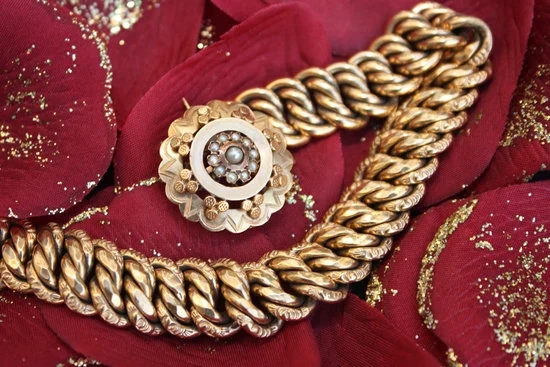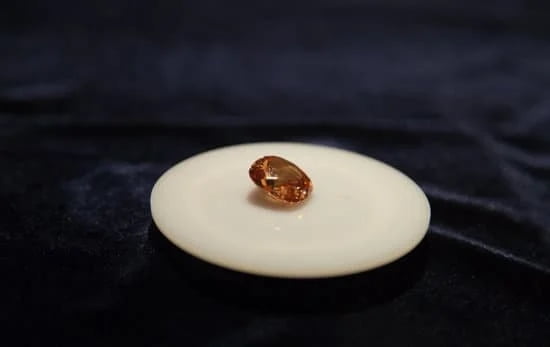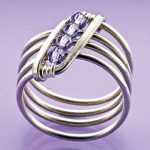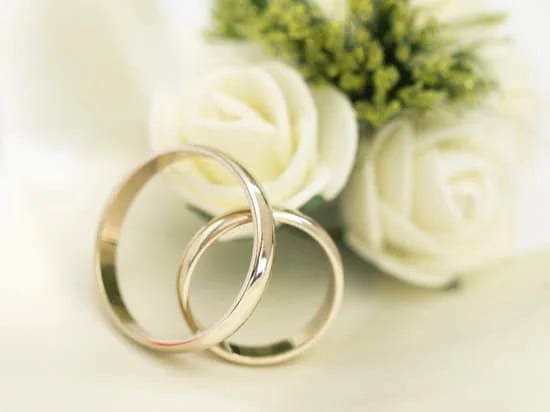Creating your own jewelry is a wonderful way to add a personal touch to your accessories and express your unique style. And what better way to do that than by making DIY jewelry stones? In this introductory section, we will delve into the exciting world of DIY jewelry stones, setting the stage for all the creative possibilities that await you.
For DIY jewelry enthusiasts looking to enhance their collection with one-of-a-kind pieces, making your own jewelry stones can be an incredibly rewarding experience. By crafting your own stones, you have the freedom to choose from a wide variety of textures, colors, and sizes, allowing you to create pieces that truly reflect your individuality.
In this article, we will not only guide you through the step-by-step process of creating your own DIY jewelry stones but also provide essential tips and techniques along the way. We will explore different types of stones commonly used in DIY jewelry making and highlight the diverse range of effects they can achieve.
Whether you prefer crystals for their ethereal sparkle or gemstones for their natural beauty, there is a stone waiting to ignite your creativity. So let’s dive in and unlock this captivating world of DIY jewelry stones together.
Understanding the Different Types of Jewelry Stones
Exploring Crystals
Crystals are one of the most popular types of stones used in DIY jewelry making. These beautiful stones come in a variety of colors, shapes, and sizes, making them versatile and suitable for a wide range of designs. One key characteristic of crystals is their natural transparency, which allows light to pass through, creating a radiant and dazzling effect. Some popular types of crystals used in DIY jewelry making include quartz, amethyst, and citrine.
Delving into Gemstones
Gemstones are another category of stones widely utilized in DIY jewelry creation. Unlike crystals, gemstones are typically opaque or translucent, with various levels of clarity. Gemstones are valued for their rarity and distinct beauty. They often have unique colors and patterns, making each piece one-of-a-kind. Examples of gemstones commonly incorporated into DIY jewelry designs include turquoise, opal, and jade.
Beads as Jewelry Stones
Beads are versatile and widely accessible materials that serve as an excellent option for DIY enthusiasts looking to experiment with jewelry stone-making. Beads can be made from various materials such as glass, wood, metal, or plastic. They come in different shapes and sizes, allowing for endless possibilities when designing jewelry pieces. Beads can add texture and visual interest to any project while providing vibrant pops of color.
By understanding the characteristics of each type of jewelry stone – crystals, gemstones, and beads – DIY enthusiasts can make informed decisions when selecting the perfect stones for their creations. Whether one prefers the mesmerizing sparkle of crystals or the timeless elegance of gemstones or the versatility of beads-the choice ultimately depends on personal preference as well as the desired appearance and style for the finished piece.
Essential Tools and Materials for DIY Jewelry Stone Making
Choosing the Right Tools
When it comes to DIY jewelry stone making, having the essential tools is crucial for creating beautiful and professional-looking pieces. Here are some of the must-have tools that every DIY enthusiast should have in their toolkit:
- Wire Cutters: These are used to cut through different gauges of wire, allowing you to create custom shapes and sizes for your jewelry stones.
- Pliers: A set of pliers, including round-nose pliers, chain-nose pliers, and flat-nose pliers, is essential for bending and shaping wire. They make it easier to create loops, wraps, and other intricate designs.
- Beading Tools: Beading needles or beading awls can come in handy when threading beads onto wire or string. They help create precise patterns and arrangements.
- Glue or Adhesive: Depending on the type of jewelry stone you are working with, a strong adhesive may be necessary to secure stones or beads onto wire or other materials.
The Right Materials Make a Difference
In addition to having the right tools, selecting the appropriate materials is key to achieving stunning DIY jewelry stones. Here are some materials you’ll need:
- Wire: Different gauges and types of wire can provide varying degrees of durability and flexibility in your jewelry stone designs. Thin-gauge wire is ideal for delicate wrapping techniques, while thicker-gauge wire works well for forming structural shapes.
- Beads: There is an endless variety of beads available for DIY jewelry making. From seed beads to glass beads to gemstone beads, each type offers its own unique texture and color palette.
- Stones: The choice of stones will depend on personal preference and design aesthetic. Crystals like quartz or amethyst add sparkle, gemstones like turquoise or lapis lazuli add vibrant colors, while natural stones like river rocks or pebbles create an earthy feel.
- Other Materials: Don’t limit yourself to just wire and beads. Experiment with mixed media elements such as charms, feathers, or fabric to add texture and visual interest to your DIY jewelry stones.
Remember, the quality of your tools and materials will directly impact the outcome of your DIY jewelry stones. Investing in high-quality tools and sourcing genuine stones and beads will ensure that your creations stand the test of time.
Tips for Choosing Materials
- Research different types of wire and their properties before purchasing. For example, sterling silver wire is great for high-end pieces, while copper wire is more cost-effective and malleable.
- Consider the weight and size of your chosen beads when selecting wire thickness. Beads that are too heavy may require thicker gauges of wire for added support.
- When choosing stones, try to find those with smooth surfaces or drilled holes for easy attachment. Avoid using porous stones or those prone to crumbling, as they may not withstand regular wear.
- Take into account color combinations and complementary textures when planning your designs. Experiment with different bead shapes, sizes, and finishes to add depth and dimension to your DIY jewelry stones.
By understanding the essential tools and materials needed for DIY jewelry stone making, you’ll be well-equipped to explore your creativity and produce unique pieces that reflect your personal style.
Step-by-Step Guide
Creating your own DIY jewelry stones can be a fun and rewarding process. Whether you’re a beginner or an experienced crafter, this step-by-step guide will break down the process into easy-to-follow steps, ensuring that you can confidently embark on your DIY journey.
Step 1: Gather Your Materials
Before you start creating your DIY jewelry stones, gather all the necessary materials. This includes wire cutters, pliers, beads, wire, glue, and any other materials specific to your design. It’s important to have everything within reach to make the process smooth and efficient.
Step 2: Choose Your Stone
Select the stone(s) that you want to use for your jewelry piece. Crystals, gemstones, and beads are popular choices. Consider their colors and properties as they will play an important role in the overall design of your stone.
Step 3: Prepare Your Wire
Cut a piece of wire that is slightly longer than the circumference of your stone. This will allow you to create secure wraps around the stone without running out of wire.
Step 4: Wrap the Stone
Start wrapping one end of the wire tightly around the base of the stone. Continue wrapping until you have covered the entire surface of the stone with wire. Experiment with different wrapping patterns to achieve unique designs.
Step 5: Secure the Wire
Once you are satisfied with how your stone is wrapped, use pliers to twist any loose ends of wire tightly against each other. This will ensure that your wrap stays in place throughout wear.
Step 6: Add Beads (Optional)
If desired, thread beads onto separate pieces of wire and attach them to your wrapped stone using pliers or by threading them through existing loops in the wrap. Be creative with bead placement and color combinations for a truly personalized touch.
Step 7: Finish and Clean
After adding any additional elements or embellishments, trim any excess wire and smooth out any rough edges using wire cutters or file. Lastly, give your DIY jewelry stone a gentle clean to remove any fingerprints or dirt that may have accumulated during the crafting process.
Now that you have completed your DIY jewelry stone, you can use it as a pendant, charm, or incorporate it into a larger jewelry piece. The possibilities are endless, so let your creativity shine and enjoy the satisfaction of wearing something truly unique.
| Materials Needed | Tools Needed |
|---|---|
| – Stone(s) (crystals, gemstones, beads) | – Wire cutters |
| – Wire | – Pliers |
| – Beads (optional) | – Glue (optional) |
Exploring Different Styles and Designs for DIY Jewelry Stones
Whether you’re a beginner or an experienced DIY jewelry enthusiast, exploring different styles and designs for DIY jewelry stones is a great way to ignite your creativity and personalize your pieces. There are countless possibilities when it comes to designing and creating your own unique jewelry stones, allowing you to express your style and create stunning statement pieces.
In this section, we will delve into various design ideas and inspirations that will help you take your DIY jewelry stone making to the next level.
One approach to exploring different styles and designs is by using multiple stones in one piece. You can combine stones of various shapes, sizes, and colors to create eye-catching arrangements. For instance, you could layer different shades of crystals or mix gemstones with beads for added texture and dimension. Experimenting with different stone combinations can lead to surprising and beautiful results.
Another way to enhance your DIY jewelry stones is by experimenting with wire wrapping patterns. Wire wrapping is a versatile technique that allows you to securely encase stones in intricate wire designs. You can create fascinating patterns using different gauges of wire and varying wrapping techniques. Play around with spirals, twists, loops, or even try incorporating beads into your wire wrapping for added visual interest.
Incorporating mixed media elements into your DIY jewelry stones is yet another avenue worth exploring. Consider adding other materials such as leather cords, fabric ribbons, or even feathers into your designs. This combination adds unique textures and layers to your jewelry stones while also providing additional creative opportunities for personalization.
By embracing these different styles and design options, you can elevate the visual impact of your DIY jewelry stones while infusing them with your personal touch. Remember that there are no limitations when it comes to experimenting and mixing techniques – let your imagination run wild. The beauty of creating DIY jewelry stones lies in the freedom it offers to explore various styles until you find what resonates with you most.
DIY Jewelry Stone Care and Maintenance
Proper care and maintenance of your DIY jewelry stones is essential to ensure their longevity and shine. By following a few simple steps, you can keep your creations looking beautiful for years to come. Here are some tips on how to care for and clean different types of jewelry stones:
- Identify the Stone: Before cleaning your DIY jewelry stone, it’s important to identify the type of stone you are working with. Different stones have different properties and may require specific cleaning methods. For example, porous stones like opals and turquoise should never be soaked in water as it can damage them.
- Gentle Cleaning: Most jewelry stones can be cleaned using a soft cloth or brush with mild soap and lukewarm water. Simply dip the cloth or brush into the soapy water, gently clean the surface of the stone, and rinse with clean water. Be careful not to scrub too hard as this can scratch or damage the stone.
- Drying: After cleaning, it’s important to dry the jewelry stone thoroughly before storing or wearing it again. Use a soft, lint-free cloth to gently pat dry the stone, removing any excess moisture.
- Storage: Proper storage is key to preventing damage or scratching of delicate jewelry stones. Store each piece separately in a soft pouch or lined box to avoid contact with other jewelry that may cause abrasion or scratches.
In addition to regular cleaning and storage, there are a few precautions you can take to maintain the beauty of your DIY jewelry stones:
- Avoid exposing your stones to harsh chemicals such as cleaning agents, perfumes, and hairspray as these can dull or discolor them.
- Remove your DIY jewelry before engaging in activities that may expose it to excessive heat, sunlight, moisture, or impact.
- Regularly inspect your creations for loose settings or damaged wires and address any issues promptly.
By following these care and maintenance tips, you can keep your DIY jewelry stones looking their best and enjoy them for years to come.
| Type of Stone | Cleaning Method | Precautions |
|---|---|---|
| Crystals (e.g., quartz, amethyst) | Mild soap and lukewarm water | Avoid exposure to direct sunlight |
| Gemstones (e.g., sapphires, rubies) | Mild soap and lukewarm water or specialized gemstone cleaner | Avoid exposure to harsh chemicals |
| Beads (e.g., glass beads, seed beads) | Mild soap and lukewarm water or specialized bead cleaner | Avoid soaking porous beads in water |
Troubleshooting Common Issues in DIY Jewelry Stone Making
Creating DIY jewelry stones can be a rewarding and fulfilling hobby, but it’s not without its challenges. Fortunately, many common issues that arise during the process of making jewelry stones can be easily resolved with some practical solutions. In this section, we will address these common issues and offer advice on how to troubleshoot them effectively.
- Fixing loose stones: One of the most frustrating problems that DIY enthusiasts may encounter is when stones become loose or come off entirely from their setting. To fix loose stones, you can try using jewelry adhesive or glue specifically designed for stone settings. Apply a small amount of adhesive to the back of the stone and carefully place it back into its setting.
Make sure to press gently but firmly to ensure a secure bond. If the stone is still not staying in place, you may need to consider replacing the setting or using a different adhesive with stronger bonding properties. - Unraveling wire: When working with wire during the stone wrapping or threading process, it’s common for it to become unraveled or tangled. To prevent this issue, make sure you are using the correct gauge and type of wire for your project. Thicker wires tend to be more resistant to unraveling compared to thinner wires.
Additionally, avoid excessive bending or pulling on the wire as this can cause it to weaken and unravel over time. If you do notice your wire becoming untwisted or tangled, gently straighten it out with your fingers or use a pair of pliers if necessary. - Selecting the right adhesive: Different types of jewelry stones require different adhesives for optimal bonding. It’s important to choose an adhesive that is suitable for your specific stone material to ensure a long-lasting hold. For example, E6000 is a popular all-purpose jewelry adhesive that works well for various stone materials such as glass, metal, ceramic, and plastic.
However, if you are working with porous or natural stones like pearls or coral, using a specialized adhesive designed for those materials is crucial. Always read the product labels and consult experts or jewelry-making forums for recommendations on the best adhesive for your specific stone type.
By addressing these common issues in DIY jewelry stone making and providing practical solutions, you can overcome obstacles with confidence and continue to create beautiful and personalized pieces. Troubleshooting is part of the learning process, so don’t be discouraged if you encounter challenges along the way. With patience and practice, you’ll become better equipped to handle any hiccups that may arise during your DIY journey.
Showcasing Stunning DIY Jewelry Stone Examples
One of the most inspiring aspects of DIY jewelry stone making is the endless creative possibilities it offers. This section will showcase a gallery of stunning DIY jewelry stones created by skilled artisans and hobbyists, providing readers with plenty of inspiration to take their own creations to the next level.
The gallery will feature a diverse range of styles and designs, highlighting the versatility of DIY jewelry stones. From simple and minimalist designs to intricate and elaborate pieces, there will be something to suit every taste and preference.
In the gallery, readers can expect to find examples of jewelry stones made with various types of stones, such as crystals, gemstones, and beads. Each piece will demonstrate how different stone choices can create unique textures, colors, and properties within a design.
Furthermore, the gallery will showcase different techniques used in DIY jewelry stone making. Readers can admire examples of wire wrapping patterns, bead threading styles, and innovative ways of incorporating mixed media elements into jewelry stones. This variety will inspire readers to experiment with their own creations and explore new techniques in their DIY journey.
By presenting these stunning DIY jewelry stone examples, this section aims to encourage readers to unleash their creativity and embrace the art of personalized jewelry making. Whether they are beginners or seasoned hobbyists, this gallery will serve as a reminder that with dedication and imagination, one can create truly remarkable pieces that reflect their unique style and personality.
Conclusion
In conclusion, DIY jewelry stone making offers a wonderful opportunity for creative enthusiasts to enhance their collection with unique and personalized pieces. By taking the time to understand the different types of stones available, selecting the right tools and materials, and following a step-by-step guide, anyone can confidently embark on their DIY journey.
Throughout this article, we have explored various styles, designs, and techniques for creating stunning jewelry stones. From wire wrapping to bead threading and stone setting, there are countless ways to let your imagination run wild. The key is to embrace your creativity and make these DIY jewelry stones your own.
In addition to the joy of creating something with your own hands, caring for and maintaining your jewelry stones is essential. By following the tips provided in this article on how to clean and store different types of stones, you can ensure their longevity and shine.
While it is natural to encounter some challenges along the way, such as loose stones or unraveling wire, fear not. This article has addressed common issues in DIY jewelry stone making and provided practical solutions. So don’t be discouraged by setbacks but rather view them as opportunities for growth and learning.
Finally, consider this article as an invitation to delve into the world of DIY jewelry stone making with confidence and excitement. With so many possibilities at your fingertips, you have the power to create unique pieces that reflect your personal style. So gather your tools, let your imagination soar, and embrace your creativity as you embark on this beautiful journey of self-expression through jewelry stone making.
Frequently Asked Questions
How do you make pebble jewelry?
Making pebble jewelry requires a few steps and materials. First, you need to collect smooth and polished pebbles or stones. These can be found in rivers, beaches, or even purchased from craft stores. Once you have the desired pebbles, clean them thoroughly to remove any dirt or debris.
Then, use a small handheld drill with a diamond drill bit to create holes in the pebbles for threading string or wire. You can choose to make necklaces, bracelets, or even earrings using these drilled pebbles. Finally, select your preferred method of attaching the pebbles to jewelry components like jump rings, clasps, or hooks based on the design you want to achieve.
What do you need to make DIY jewelry?
To make DIY jewelry, there are several basic supplies you will need. Firstly, you’ll require beads of different sizes and styles; these can be made of various materials such as glass, metal, plastic, or wood. Along with beads, you will also need stringing materials like elastic cord, wire (such as beading wire), thread (for embroidery-style jewelry), or chains depending on the type of jewelry you’re making.
Additionally, tools such as pliers (both flat-nose and round-nose), wire cutters, scissors, and a ruler are essential for measuring and manipulating the materials. Other accessories such as charms or pendants can also be included to enhance your DIY creations.
What do I need to make jewelry from stones?
To make jewelry from stones specifically, there are a few additional supplies needed beyond what is required for general DIY jewelry making. Firstly, you will obviously need stones or gemstones that suit your personal taste and intended design – they can either be sourced from nature or purchased from gemstone suppliers and shops specializing in beads/stones for jewelry making. In addition to this core component of stones themselves is the necessary drilling equipment – whether it’s a rotary tool with diamond bits or specialized drilling machines designed for working with stones.
This will allow you to create holes in the stones for threading or wiring. Depending on your design, you may also require additional findings such as bails (for pendant-like jewelry), bead caps, or connectors to help attach the stones to chains or cords. Lastly, basic jewelry-making supplies mentioned earlier like pliers, wire cutters, and beading wire will still be needed for assembling the final piece.

Welcome to my jewelry blog! My name is Sarah and I am the owner of this blog.
I love making jewelry and sharing my creations with others.
So whether you’re someone who loves wearing jewelry yourself or simply enjoys learning about it, be sure to check out my blog for insightful posts on everything related to this exciting topic!





